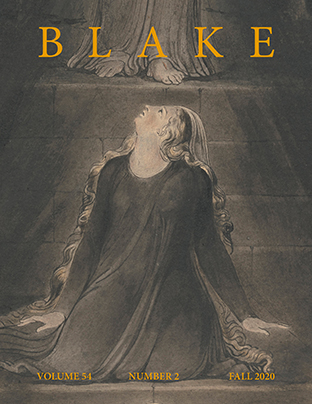Interpreting Blake’s The Magdalene at the Sepulchre
DOI:
https://doi.org/10.47761/biq.269Abstract
In 1805, Blake painted the beautiful, solemn watercolor The Magdalene at the Sepulchre for his friend and patron Thomas Butts. It illustrates a scene from the resurrection narrative in the gospel of John, capturing the moment before Mary recognizes that the figure who appears to her, outside the tomb, is the risen Jesus.
The Magdalene at the Sepulchre is a consummate example of Blake’s incarnational aesthetic and a striking visualization of his interpretive approach to scripture. By choosing to illustrate this specific episode from John’s gospel, he invokes the illustrious Noli me tangere tradition while departing from it, or, more accurately, by refusing to enter it at all.




